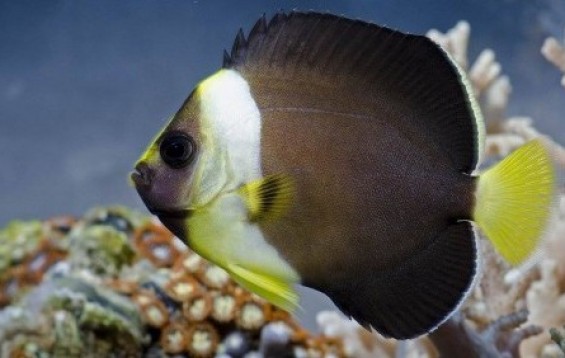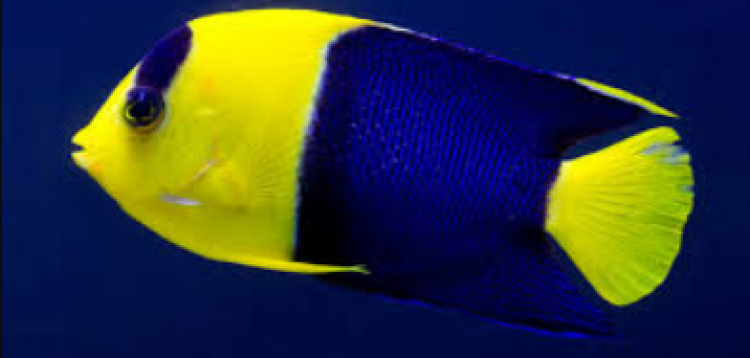- Name:
False Personifer Angelfish
(View AKA's) - Family: Pomacanthidae
- Species: Angel Large
- Scientific Name: Chaetodontoplus meredithi


General info about False Personifer Angelfish
The False Personifer Angelfish has an unusual, almost blistered appearance to its body which is generally black. The face is blue-green and the males have a speckled yellow face. A swatch of yellow covers the forehead and the caudal fin is also yellow and split with a blue-green band. This is one of the few species of angelfish where the males differ morphologically from the females. In this case, the males have a slightly longer body than females. A large tank with live rock should be provided. Not a good reef dweller, the Personifer Angelfish is prone to nip at stony and soft corals (sessile invertebrates) and clam mantles.
False Personifer Angelfish Diet & Nutrition
This angelfish species mainly feeds on sponges, tunicates and jellyfish. In tank conditions, it may be given a varied diet consisting of frozen food such as fortified brine shrimp, mysis, and food preparations that contains sponge matter. They may also be fed with flake food containing algae such as Spirulina and Nori. It is best that the False Personifer angelfishes are introduced in a mature tank with plenty of live rock available for grazing.
Determining Sex of False Personifer Angelfish
Male and Female Chaetodontoplus meredithi are one of the few angelfish where they differ morphologically. Aside from the difference in body size, males having longer bodies than females, they also differ on the color of their faces. Males have a more blue-green face color and have speckled yellow faces, while the females have less pronounce colors on their faces.
Common Diseases with False Personifer Angelfish
If not kept in tanks with optimum condition, the False Personifer agelfish are susceptible to the common saltwater diseases such as Angelfish Virus, White Spot Disease, Velvet Disease, and Head and lateral line erosion (HLLE).
False Personifer Angelfish Origin
Widely distributed along the Western Pacific, this angelfish species' occurrence ranges from Queensland, Australia south to New South Wales and Lord Howe Island.
Caution with False Personifer Angelfish
The False Personifer Species are known to nip at stony and soft corals, and clam mantles if not fed properly. They are also known to feed tubeworms. This species is not neccessarily aggresive, but it has a greater tendency towards aggresion then other species of the same genus.
Acclimating False Personifer Angelfish
These angelfishes should be placed in tanks that have enough swimming space. They must intoduced in mature tanks with flimaentous algae for grazing and as hiding place.
Original Detail
| Name | Species | Family | Scientific Name | More Detail | Added by |
|---|---|---|---|---|---|
| False Personifer Angelfish | Angel Large | Pomacanthidae | Chaetodontoplus meredithi | The False Personifer Angelfish has an unusual, almost blistered appearance to its body which is generally black. The face is blue-green and the males have a speckled yellow face. A swatch of yellow covers the forehead and the caudal fin is also yellow and split with a blue-green band. This is one of the few species of angelfish where the males differ morphologically from the females. In this case, the males have a slightly longer body than females. A large tank with live rock should be provided. Not a good reef dweller, the Personifer Angelfish is prone to nip at stony and soft corals (sessile invertebrates) and clam mantles. |
PalaciosAn |
Changed by users
| Submitted Date | Submitted By | Status | Action |
|---|


